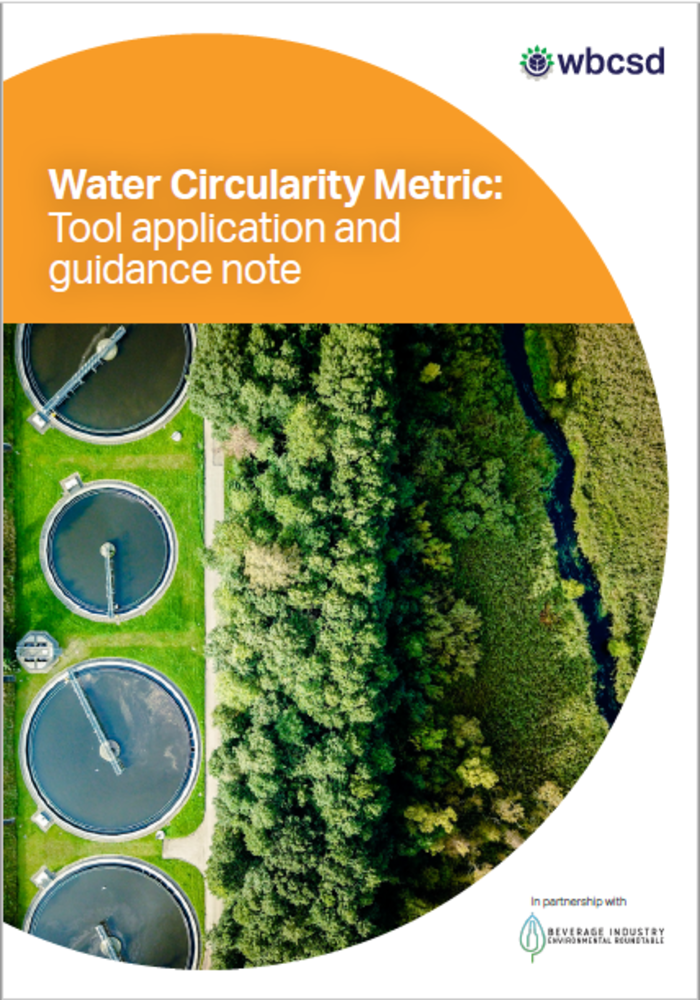Circular water management has gained attention in recent years as an approach to address challenges related to water quantity, quality and value from a context-based perspective.
Where water is scarce, circular water management offers an opportunity to do more with less, reducing demand on the watershed; where water is too dirty, it offers an opportunity to reduce pollution and use water of a quality that is ‘fit for purpose’; and, where water is undervalued, circular water management offers an opportunity to capture additional value.
The World Business Council for Sustainable Development’s Global Water Solutions Project and Factor 10 Circular Metrics Working Group have collaborated with the Beverage Industry Environmental Roundtable (BIER) to develop a set of indicators to assess the circularity of water at the facility level. A scenario-based Water Circularity Metric (WCM) tool has been created to help users measure, set targets and monitor progress on circular water management in through these indicators.
The Water Circularity Metric: Tool application and guidance note provides instructions on using the Excel-based WCM tool to evaluate a site’s circularity and guide your business’ transition from linear to a more circular water management. The guidance and the WCM tool provides a pragmatic approach for business to adopt a common metric for water circularity to use both for internal decision-making and for communicating with external key stakeholders.
Both the Excel tool and the guidance note are available for download in both English and Spanish.
In adopting this metric, the intention is to highlight areas where water circularity can be improved, both in terms of ‘closing the loop’ (effectiveness) and ‘optimizing the loop’ (efficiency). The tool considers that circularity is achieved in the context of local watershed and gives due emphasis on site’s quantitative water flows as well qualitative water flows.
The outcomes of the tool are three water circularity indicators (also included in WBCSD’s Circular Transition Indicators) which allows companies to measure overall circularity for their operations.

